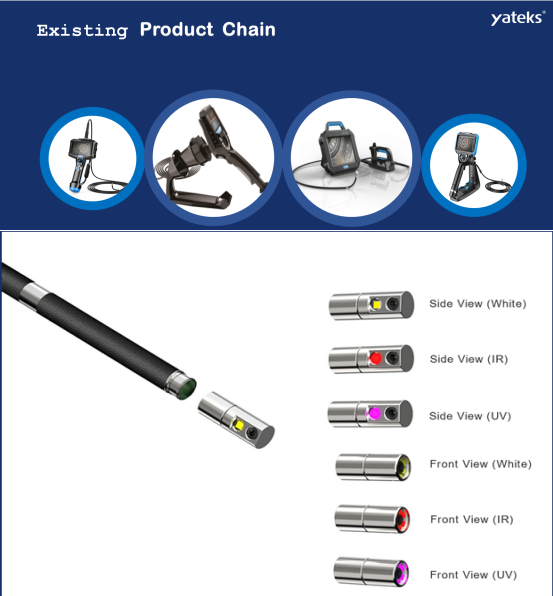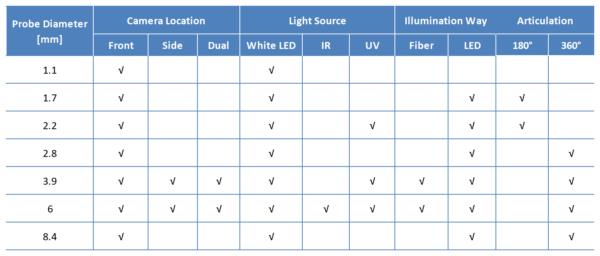There are three commonly used light sources for industrial borescope, including ordinary white light, infrared light (IR), and ultraviolet light. So what are the differences between the borescope of these three light sources? What are the uses?
-
white light borescope
Ordinary white light is used for normal detection in general scenarios. The light is transmitted to the end of the insertion tube through the front multiple super bright white LED lights or the rear white LED through the optical fiber, which brings better lighting effect and makes the image clearer and brighter. This light source is closer to the effect of ordinary daylight lighting (color temperature is around 5500K), and can present more realistic colors and images.
-
infrared light IR borescope
Infrared light (IR) is generally used for detection in dark environments, and infrared light with a wavelength of 940nm or 850nm is generally used as a light source. Because the red storm phenomenon is relatively weak, the former is almost invisible to the human eye, and has better concealment than the latter, so it is widely used in the police field. In general, the police hose sight glass uses infrared light sources, such as criminal investigation, arrest, anti-terrorism, security work, etc., which can greatly reduce the possibility of exposure. Infrared endoscopes can also be used for industrial and civil inspections. In the case of complete darkness, it is possible to view the basic situation at a relatively long distance and present a clearer black and white image on the display.
-
ultraviolet light UV borescope
Ultraviolet light UV is to use ultraviolet light to irradiate the fluorescent agent to emit reflected fluorescence, and to detect through the principle of direct visual observation. Generally, a layer of fluorescent agent is applied inside the component to remove the excess coating on the surface, because the fluorescent agent that penetrates into the cracks of the component due to capillary action will remain, and the fluorescent color visible to the naked eye can be clearly displayed by ultraviolet light irradiation. Such subtle defects are generally difficult to find, and industrial endoscopes made according to the fluorescent reaction of ultraviolet light (UV) can just be used as a supplement to ordinary white light and infrared endoscopes.
At present, Yateks has a rich series of industrial borescope products, which can meet the application needs of various industries. We have distributors all over the world. If you have product needs, we can provide you with the best localized service.


